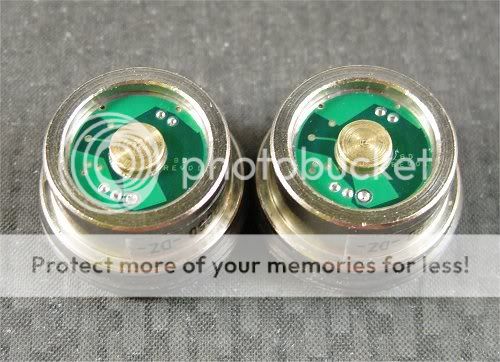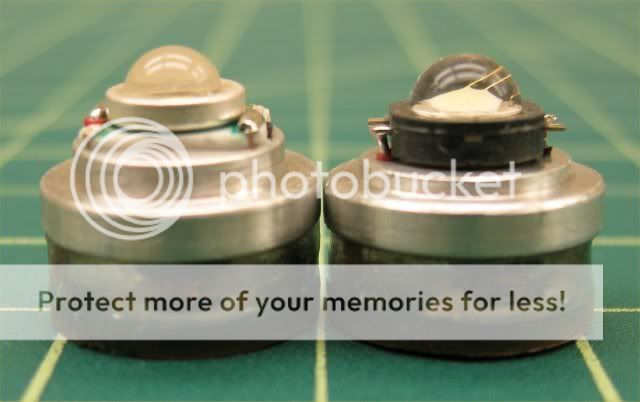Here's a repair that I was asked to document. First time I've used one of these & got to see one in person. Very nice heatsink & I'm sad to have missed out on them. 
Hope the owner enjoys! :wave:
-mariposaoyaka's OFC MiniMag AA heatsink
-K2 TFFC TVOD
-GD1000
Copper corrodes & oxidizes very easily. Good thing it cleans up easy so I started out by cleaning it up & removing left over epoxy.



Repositioned the inductor inwards to allow better fitment in the OFC's can.

Added a brass contact for better wear as with all my builds when applicable.

Trimmed the K2 TFFC so the owner would have no issue installing & removing the pill with the retaining ring from one Mag to another.



She's a screamer! All my MagAAs are bored out for use with various 20mm reflectors. Because of the height of the OFC it can not be used with a 20mm reflector & must be used with a reflector such as a McR-18 or IMS/Khatod17.
So here's my test setup lego'd from two of my most favorite Mags beautifully machined by Mirage_Man using a AA-to-C adapter (I had to bore out to fit the OFC). 1x AW14500



Thanks for looking!

Hope the owner enjoys! :wave:
-mariposaoyaka's OFC MiniMag AA heatsink
-K2 TFFC TVOD
-GD1000
Copper corrodes & oxidizes very easily. Good thing it cleans up easy so I started out by cleaning it up & removing left over epoxy.



Repositioned the inductor inwards to allow better fitment in the OFC's can.

Added a brass contact for better wear as with all my builds when applicable.

Trimmed the K2 TFFC so the owner would have no issue installing & removing the pill with the retaining ring from one Mag to another.



She's a screamer! All my MagAAs are bored out for use with various 20mm reflectors. Because of the height of the OFC it can not be used with a 20mm reflector & must be used with a reflector such as a McR-18 or IMS/Khatod17.
So here's my test setup lego'd from two of my most favorite Mags beautifully machined by Mirage_Man using a AA-to-C adapter (I had to bore out to fit the OFC). 1x AW14500



Thanks for looking!







